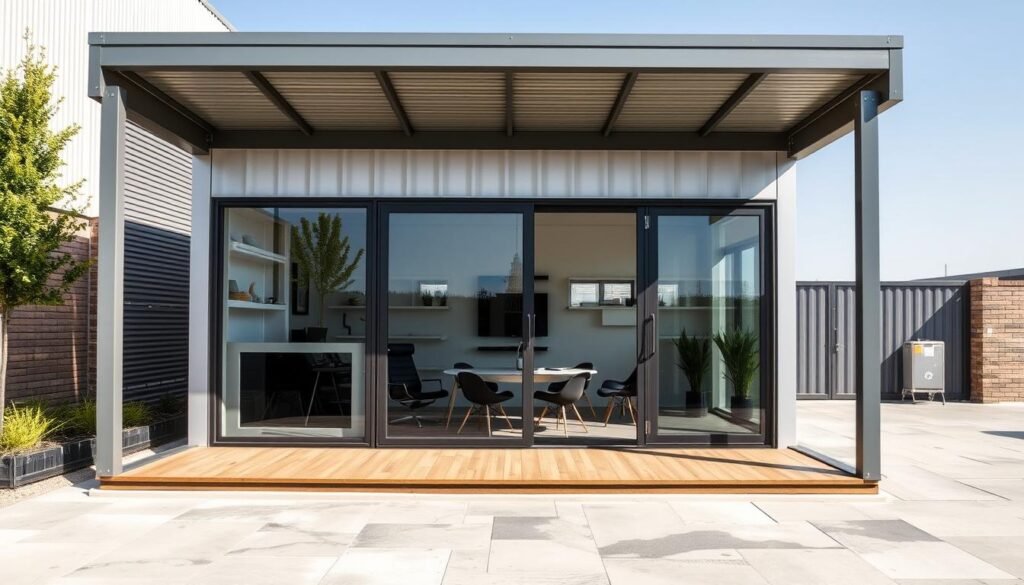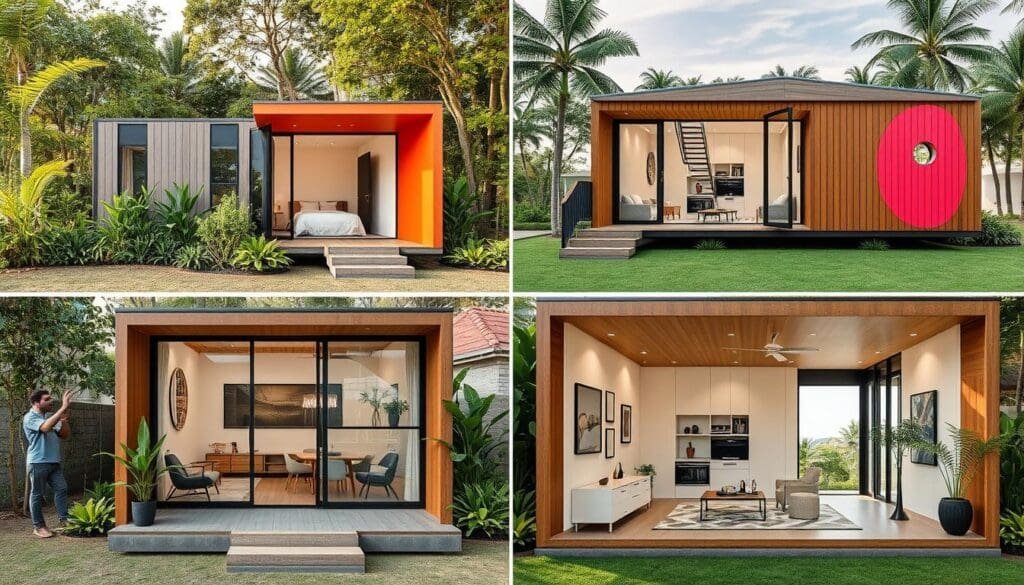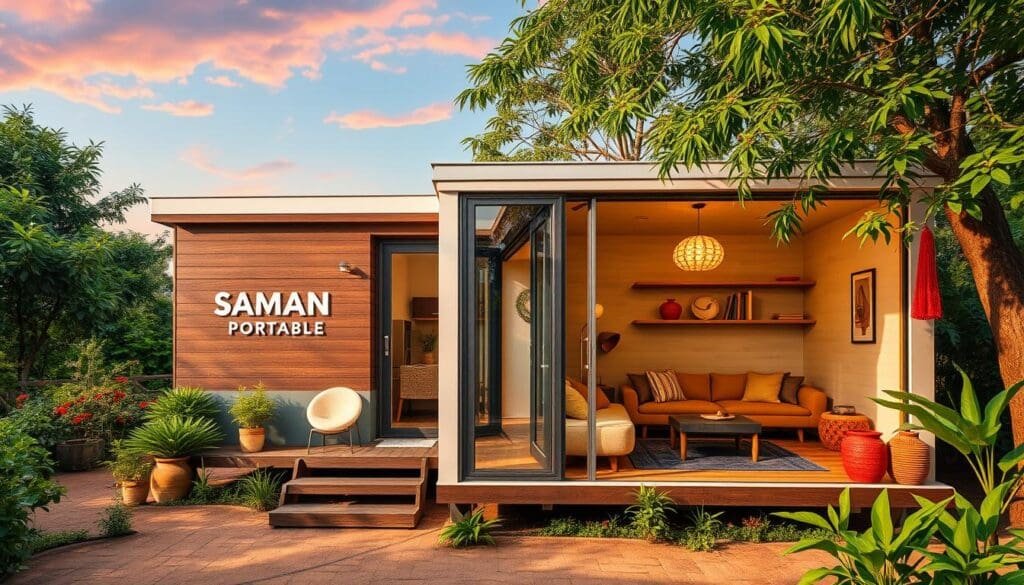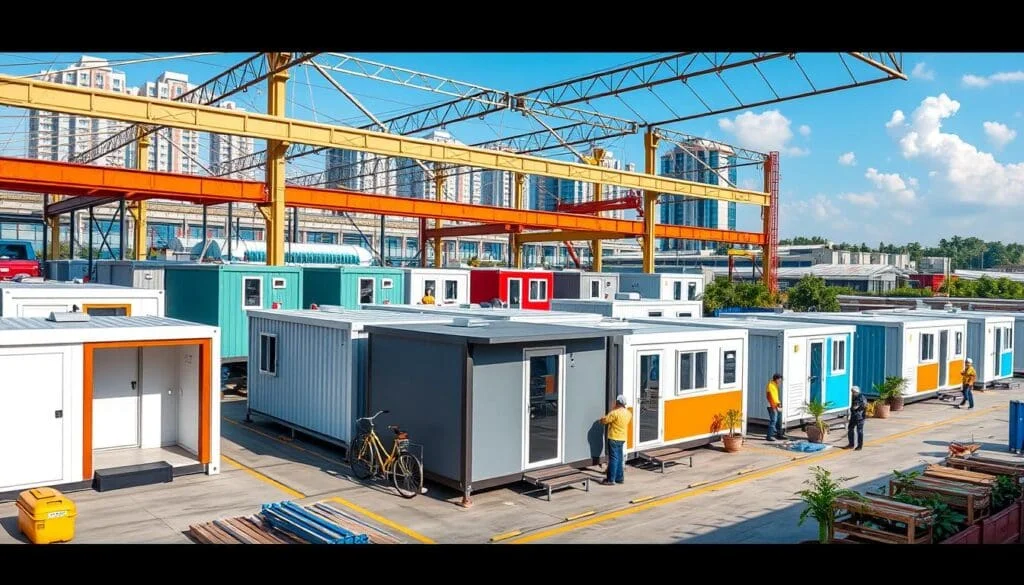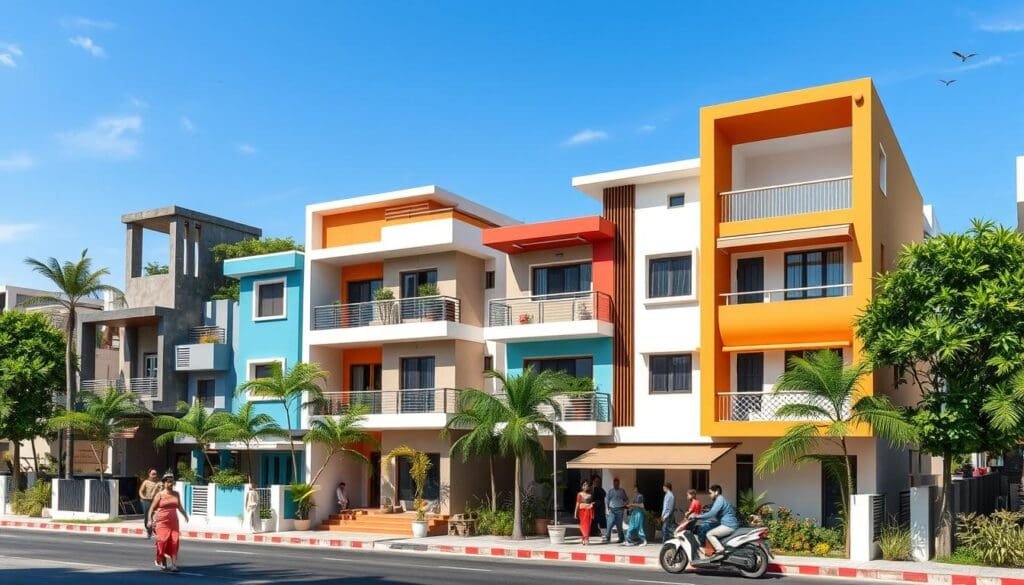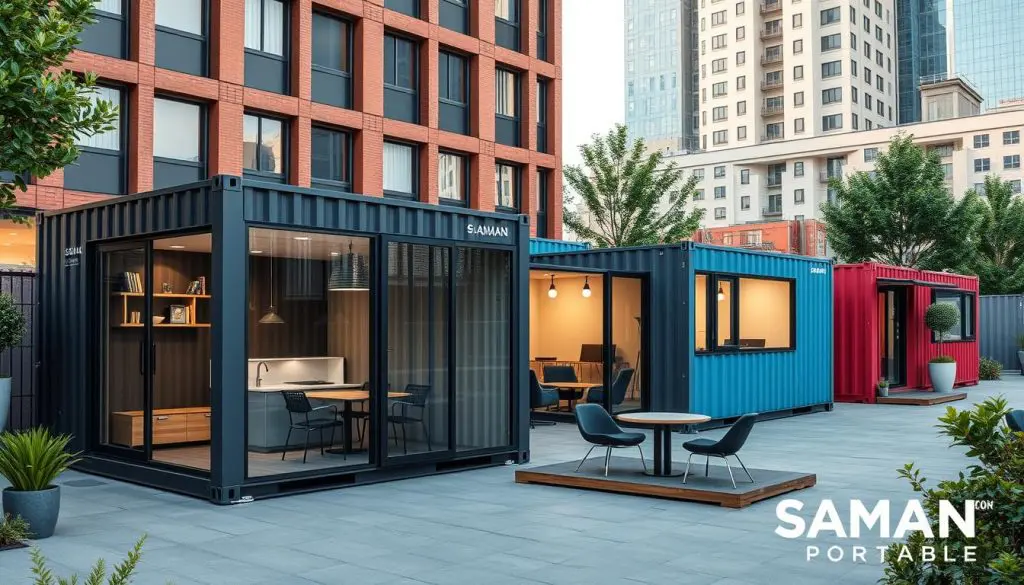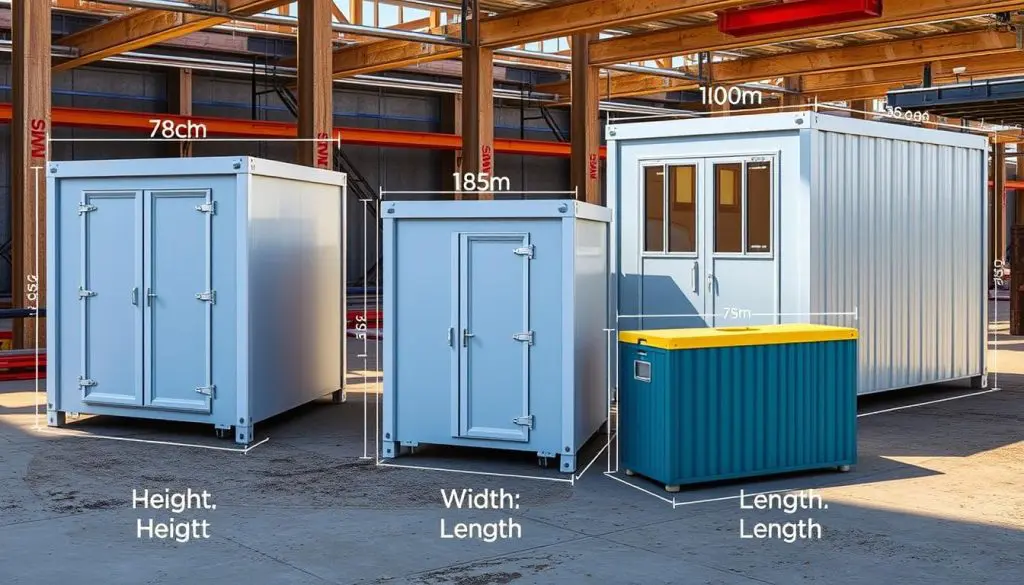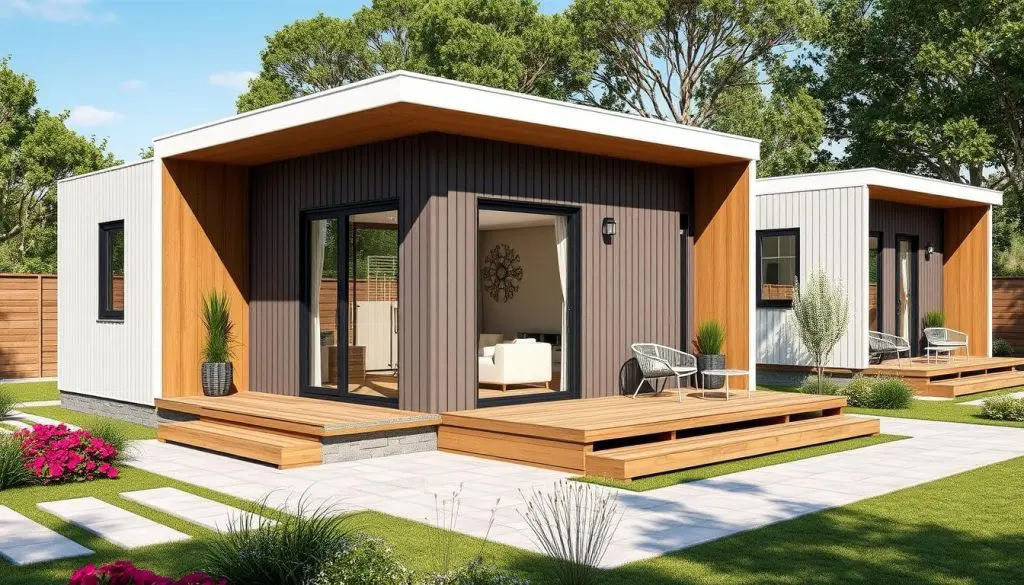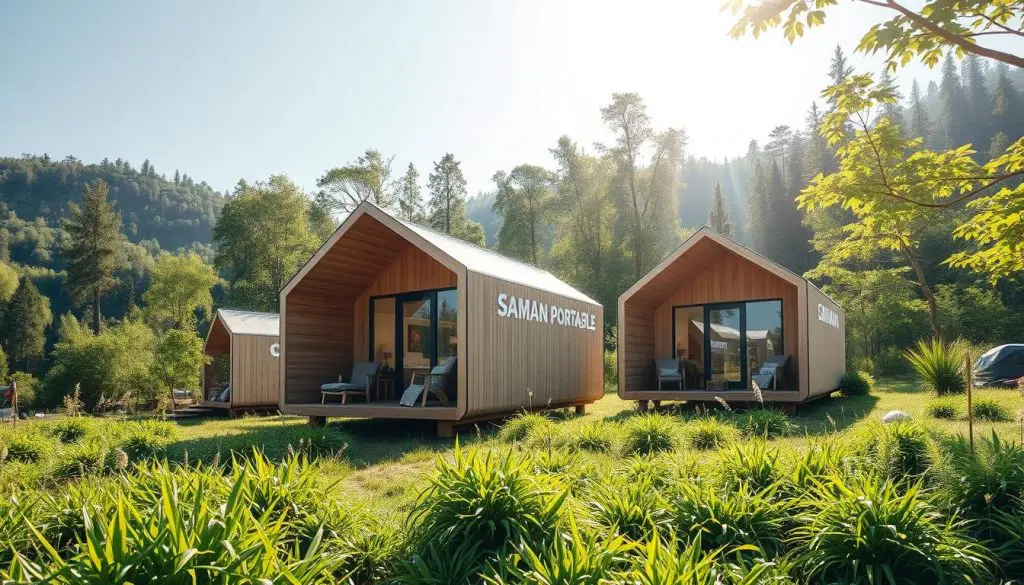Shipping Container Home Extensions: Expanding Your Living Space with Style and Efficiency
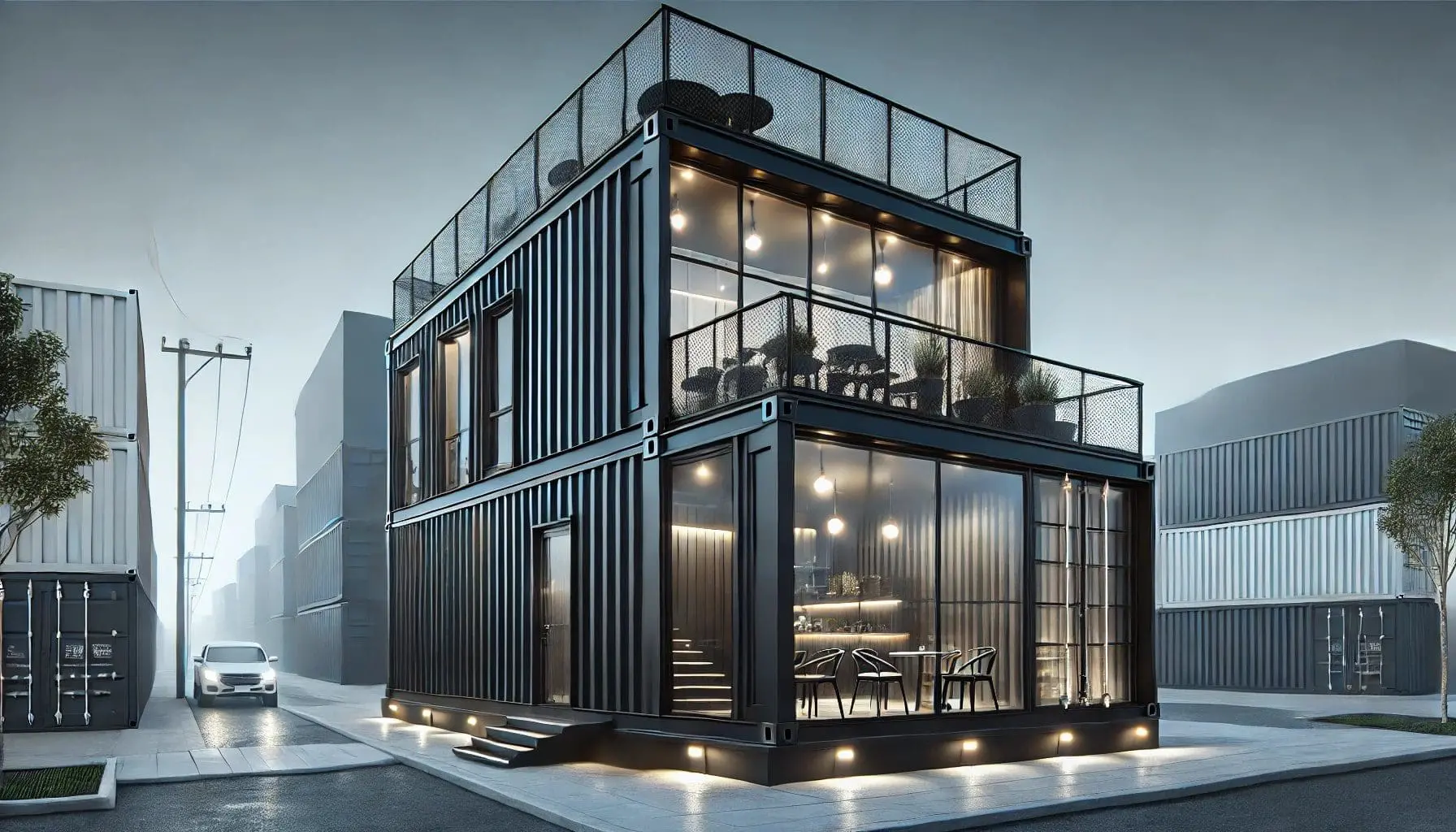
Introduction to Shipping Container Home Extensions
Expanding Your Home with Shipping Container Extensions
Shipping containers offer a unique and innovative approach to home expansion. With a shipping container home extension, you can add valuable living space in a sustainable and cost-effective way. Whether you need an additional bedroom, office space, or a private studio, shipping containers provide a flexible and modular solution that is growing in popularity. Many homeowners appreciate how these extensions bring modern design, affordability, and quick installation together, making them a practical choice for today’s lifestyle needs.
The Benefits of Attaching a Shipping Container to Your Home
Using a shipping container attached to a house as an extension offers several advantages over traditional home additions. Shipping containers are durable, made of industrial-grade steel, and can withstand various weather conditions. Moreover, they are pre-constructed, which means the time required to modify and install them is significantly reduced compared to traditional builds. These containers can be customized to blend with the existing architecture, ensuring the extension feels like a natural part of your home. For ideas on adaptable and flexible extensions, explore multi-functional container office designs that can be tailored to diverse needs.
Shipping Container Extensions for Modern Living Spaces
For those seeking a modern and minimalist aesthetic, shipping containers offer clean lines and an industrial appeal that complements contemporary home designs. A shipping container addition to a house allows you to expand with a functional and stylish living space that enhances your home’s overall look. From sleek, open-plan layouts to versatile room configurations, these extensions provide options that cater to diverse tastes and requirements. Portable cabins are similarly designed for compact, efficient use of space, proving that small, flexible structures can accommodate various living needs. For more inspiration, check out portable cabin solutions for compact living.
An Eco-Friendly Choice for Expanding Your Home
One of the most compelling aspects of a container home addition is its eco-friendliness. By repurposing a shipping container, you’re reducing waste and conserving resources, as well as lowering the environmental impact of traditional construction methods. These extensions can also be equipped with eco-friendly features, such as solar panels, energy-efficient lighting, and water-saving fixtures, further supporting sustainable living. For more on the environmental benefits of container living, explore sustainable container living solutions that promote green building.
A Versatile Solution for Today’s Homeowners
Shipping container extensions provide endless possibilities, whether you’re looking to add a guest suite, a home office, or an outdoor entertainment area. Their modular nature allows for flexibility in design and configuration, giving homeowners the freedom to adapt and customize the space. These containers can be arranged in single or multi-level layouts, depending on space availability and budget. Many porta cabins also showcase the versatility and adaptability of modular living spaces. For ideas on adaptable room setups, explore portability-focused porta cabins that meet a range of needs.
Shipping container home extensions offer a modern, eco-friendly, and flexible solution to expanding living spaces, with a unique aesthetic that complements various architectural styles. In the next section, we’ll delve into the specific benefits of shipping container house extensions and why they’re becoming a popular choice for today’s homeowners.
Benefits of Shipping Container House Extensions
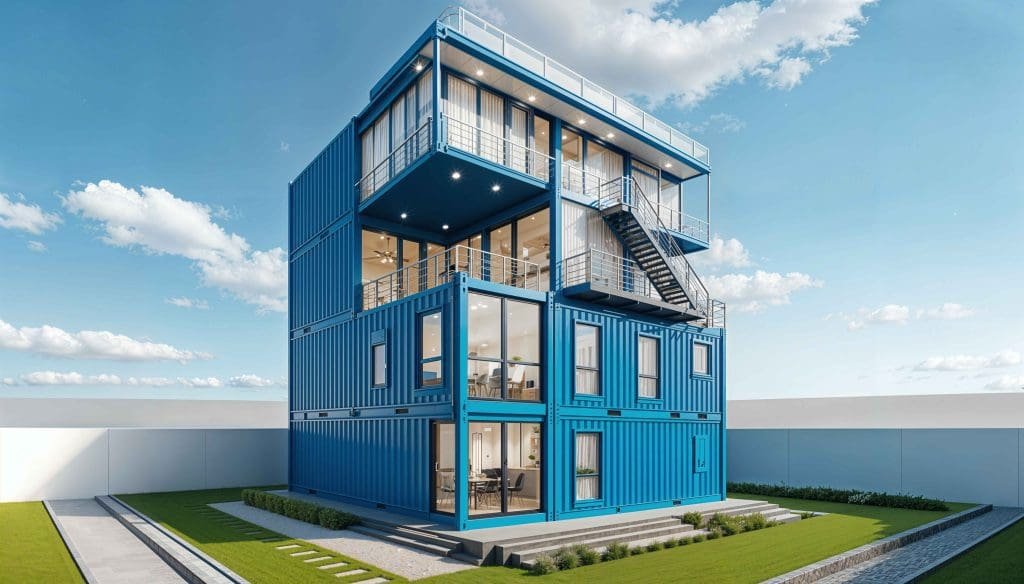
Affordability and Cost Savings
One of the main reasons homeowners choose a shipping container house extension is its affordability. Compared to traditional construction methods, using a shipping container significantly reduces material and labor costs. With pre-constructed steel frames, containers require minimal structural modifications, lowering both installation time and expenses. These savings make container extensions an attractive option for those looking to expand their homes on a budget. Many portable cabins also highlight this cost-effective approach, showcasing affordable ways to add living space. For more budget-friendly ideas, see economical portable cabin options.
Quick and Efficient Construction
Shipping container extensions offer a quicker construction process than traditional home additions, often taking just weeks rather than months to complete. The container’s pre-fabricated structure allows for off-site customization, which can be delivered and installed swiftly. This efficiency is ideal for homeowners needing an immediate solution for additional space, whether it’s an extra bedroom, office, or recreational area. Container offices demonstrate the versatility and rapid installation of container structures for a variety of uses. For efficient construction options, explore fast-install container offices that are ready for quick setup.
Durability and Low Maintenance
Built to withstand extreme conditions, shipping containers are made of industrial-grade steel, making them highly durable and low-maintenance. With proper insulation and weatherproofing, these containers offer a long-lasting solution that requires minimal upkeep. This resilience makes them suitable for a wide range of climates, from cold and humid regions to hot and dry areas. Many container homes also incorporate these durable qualities, proving that container structures can endure diverse environmental factors. For robust and weather-resistant options, see durable container home models designed to last.
Eco-Friendly and Sustainable Choice
Choosing a container home addition is a sustainable decision, as it repurposes used shipping containers and reduces the demand for new construction materials. Additionally, shipping container extensions can be outfitted with green technologies like solar panels, water-saving fixtures, and energy-efficient lighting, further enhancing their eco-friendly appeal. These sustainable options align well with modern environmental goals, making container extensions a great choice for eco-conscious homeowners. For more sustainable structures, explore green-focused container living solutions that promote eco-friendly practices.
Versatile Design and Customization Options
Shipping container extensions are highly versatile, allowing homeowners to design and customize the space to suit specific needs. From guest rooms and home offices to gyms and art studios, container extensions can be tailored to accommodate various functions. The modular design of shipping containers also means they can be stacked or arranged in creative configurations to maximize space. Many portable cabins offer similar flexibility, proving that compact spaces can be adapted for multiple purposes. For more on versatile configurations, check out customizable portable cabin designs that fit different uses.
A shipping container house extension provides an affordable, durable, and eco-friendly way to expand your home with a modern twist. In the next section, we’ll discuss planning a shipping container home addition, exploring the steps to take before embarking on your project to ensure a smooth and successful build.
Planning a Shipping Container Home Addition
Assessing Available Space and Placement
Before starting a shipping container home addition, it’s essential to evaluate the available space on your property to determine where the container will fit best. Consider factors such as accessibility, existing landscape, and how the addition will connect to your main home. Popular locations for container extensions include side yards, backyards, and even rooftop spaces for those in urban areas. This initial planning step ensures the container addition aligns with your home’s flow and style. For ideas on adaptable placements, explore versatile container office setups that fit various locations.
Defining the Purpose of the Extension
Understanding the primary function of the container addition is crucial for planning the layout, features, and customizations needed. Will the space be used as an extra bedroom, a home office, or a recreational room? Defining the purpose early on allows you to make informed decisions about layout, insulation, lighting, and decor to ensure it meets your needs. Many portable cabins serve multi-functional purposes, showcasing how container spaces can be adapted to suit various lifestyles. For inspiration on multi-purpose rooms, see flexible portable cabin designs that offer versatility.
Consulting with Local Authorities for Zoning and Permits
Before installing a shipping container attached to a house, check with local authorities to confirm zoning regulations and obtain necessary permits. Some areas have specific rules governing container structures, including setbacks, height restrictions, and utility connections. Consulting with a local architect or contractor familiar with container builds can also help you navigate building codes and ensure compliance. Container-based offices often follow zoning guidelines to meet regulatory standards, providing examples of compliant setups. For compliant container designs, explore zoning-friendly container office models.
Choosing the Right Access Points and Connectivity
Properly integrating the container addition with your home’s existing layout is key to maintaining flow and accessibility. Plan entry points and transitions, such as hallways, doorways, or connecting breezeways, to ensure a seamless connection. For a standalone container that serves as a detached unit, consider proximity to the main house and accessibility for residents. Many container homes include thoughtful layouts that enhance connectivity between spaces. For layout ideas, explore connected container home setups designed for easy access.
Evaluating Utility and Infrastructure Needs
If your container addition will require utilities, plan for connections to your home’s electrical, plumbing, and heating systems. Consulting with an electrician or plumber during the planning phase helps ensure safe and efficient setup for lighting, outlets, water, and climate control. Additionally, for off-grid options, consider installing independent solar panels, composting toilets, or water tanks. Many portable cabins incorporate these utility setups to support both on-grid and off-grid needs. For utility-ready designs, see self-sustaining portable cabin options that provide essential infrastructure.
Planning a shipping container home addition involves assessing space, defining purpose, consulting regulations, and planning for utilities, ensuring a smooth integration with your existing home. In the next section, we’ll discuss design options for a shipping container attached to a house, exploring layout and customization ideas for a functional and stylish addition.
Design Options for a Shipping Container Attached to a House
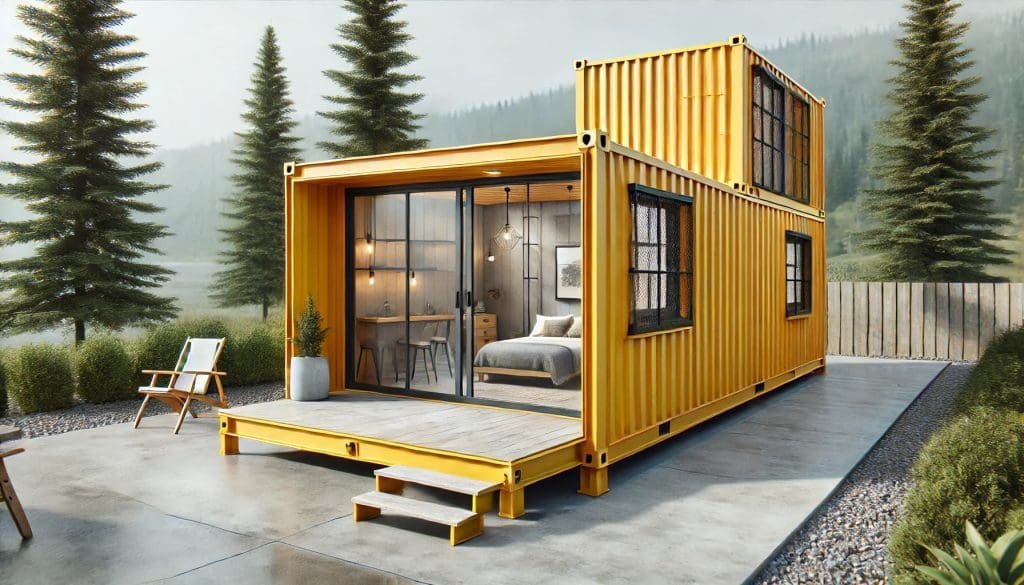
Single-Room Extensions for Specialized Spaces
One popular design option for a shipping container attached to a house is a single-room extension. This approach is ideal for homeowners looking to add a specialized space, such as a guest bedroom, home office, or fitness studio. Single-room container extensions are versatile, cost-effective, and can be customized with various finishes to match your existing home’s style. Many portable cabins are designed as standalone units that showcase the functionality of compact, single-purpose spaces. For ideas on single-room configurations, explore compact portable cabin layouts that maximize usability.
Multi-Functional Spaces for Versatile Use
If you need a more flexible space, a multi-functional container home addition is an excellent choice. By designing an open-concept layout with modular furniture, you can create a space that easily transitions between different uses. For example, an open-plan container extension could serve as a daytime home office that transforms into a guest room at night. Multi-functional container spaces offer the adaptability needed for modern lifestyles. Many container offices utilize multi-functional layouts to serve both personal and professional needs. For ideas on adaptable spaces, see versatile container office designs built for flexibility.
Double-Container Layouts for Larger Additions
For homeowners looking to add a more substantial space, a double-container layout can provide the square footage needed for multi-room additions. Connecting two shipping containers side-by-side or stacking them vertically creates ample room for additional living spaces, such as a bedroom and bathroom suite or an extended kitchen and dining area. Double-container layouts offer the flexibility to expand horizontally or vertically based on available space. Many container homes feature double-container configurations to increase living area. For inspiration on multi-container setups, explore spacious container home models designed for expanded living.
Blending Aesthetics with Your Existing Home
A key consideration in designing a shipping container extension is ensuring it complements your home’s existing architecture. You can achieve this by adding exterior cladding, matching paint colors, or integrating landscaping around the container to blend it seamlessly with the main house. Wood cladding, for example, can soften the industrial look of a container and create a cohesive aesthetic. Many portable cabins incorporate exterior finishes that help them integrate naturally into residential environments. For examples of stylish exteriors, check out exterior-focused portable cabin designs that prioritize aesthetics.
Incorporating Outdoor Access and Views
If your property offers scenic views or outdoor space, consider adding large windows, sliding glass doors, or a small deck to your container addition. These features create a strong connection to the outdoors, making the space feel larger and more inviting. Container extensions with outdoor access are ideal for creating an indoor-outdoor living experience, especially for rooms like studios, guest suites, or living areas. Many container offices are designed with large windows and outdoor access to enhance the work environment. For ideas on incorporating views and outdoor access, explore window-filled container office setups designed to bring the outside in.
Designing a shipping container attached to a house offers various layout and aesthetic options, from single-room extensions to double-container setups, providing both functionality and style. In the next section, we’ll cover structural and foundation requirements for container extensions, discussing what’s needed to securely integrate a container with your home.
Structural and Foundation Requirements for Container Extensions
Choosing the Right Foundation for Stability
A secure foundation is essential for a shipping container home extension to ensure stability and durability over time. The most common foundations for container additions include concrete slabs, pier foundations, and, in some cases, gravel beds for temporary or semi-permanent setups. Concrete slabs are ideal for permanent installations, providing a stable, level base that supports the container’s weight evenly. Pier foundations can work well for uneven terrain, offering flexibility while maintaining stability. Many portable cabins also rely on concrete or pier foundations for secure installations. For foundation ideas, see foundation-ready portable cabin models that offer various setup options.
Anchoring and Securing the Container
Properly anchoring the container to its foundation ensures it remains stable during storms, high winds, or even seismic activity. Ground anchors, steel plates, and concrete bolts are commonly used to secure containers to their foundations. These anchoring techniques prevent shifting and enhance the structure’s resilience to environmental forces. Anchoring is especially crucial if the container extension is in a region with extreme weather. Many container offices utilize secure anchoring systems to withstand various conditions. For examples, explore anchored container office designs built with durability in mind.
Structural Reinforcements for Multi-Container and Multi-Story Additions
If you’re planning a larger addition with stacked or connected containers, structural reinforcements are necessary to ensure safety and stability. Steel beams, reinforced joints, and load-bearing walls may be required to support multi-story additions. These reinforcements add stability and help manage the weight of stacked containers. Structural integrity is key, particularly for multi-container setups that involve complex layouts. Many container homes feature reinforced frames for secure stacking and stability. For ideas on reinforced designs, see multi-container home setups built for structural strength.
Weatherproofing and Insulation for Protection
Proper weatherproofing and insulation are essential for making a container addition comfortable and durable in various climates. Adding a waterproof coating, sealing windows and doors, and incorporating weather-resistant paint protect the structure from moisture and temperature fluctuations. Insulation within the walls, floors, and roof helps maintain comfortable indoor temperatures, reducing the need for excessive heating or cooling. Many portable cabins include built-in insulation and weatherproofing to ensure year-round comfort. For ideas on weather-resistant solutions, explore insulated portable cabin designs that offer all-season comfort.
Complying with Building Codes and Zoning Regulations
Before proceeding with a container addition, ensure compliance with local building codes and zoning regulations. Requirements may include setbacks, height restrictions, and safety standards for multi-story additions. Consulting with a structural engineer or local authorities can help confirm that your container addition meets all necessary regulations. Many container offices and residential setups adhere to strict building codes, showcasing compliant container structures. For ideas on regulation-friendly designs, check out zoning-compliant container office models that meet building standards.
Understanding the foundation, anchoring, structural reinforcements, and regulatory requirements for a shipping container extension ensures that it remains safe, stable, and comfortable for years to come. In the next section, we’ll explore cost and budgeting for shipping container house extensions, providing tips on planning an affordable and high-quality project.
Cost and Budgeting for Shipping Container House Extensions
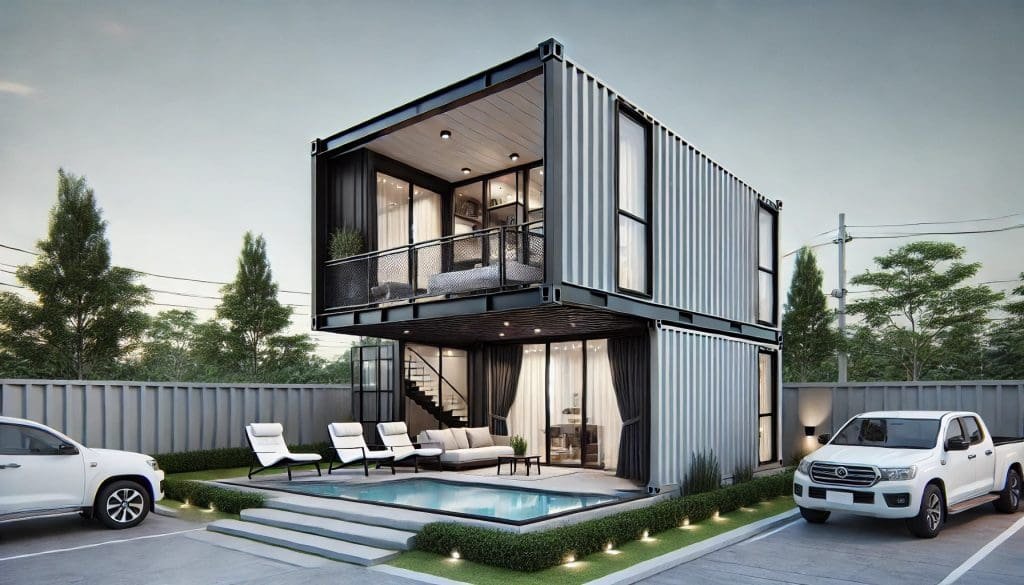
Understanding Core Costs of Container Extensions
The cost of a shipping container home extension includes several core elements, such as the container itself, foundation, insulation, and labor. Basic container prices vary depending on size and condition, with additional expenses for structural modifications and customizations. Insulation, interior finishes, and utility hookups can add to the budget, especially if the extension will be used as a living or working space. Many portable cabins come in different price ranges based on custom features, offering affordable ways to expand your home. For budget-friendly options, explore cost-effective portable cabins that meet various needs.
Comparing DIY vs. Professional Installation Costs
Opting for a DIY installation can save costs, especially for homeowners with construction skills. However, professional installation offers benefits such as structural expertise, code compliance, and reduced installation time. Professional services ensure that critical aspects like anchoring, electrical work, and plumbing are safely managed, making them a preferred choice for complex projects. Many container homes are available as pre-fabricated units, simplifying the installation process. For pre-built setups, explore ready-to-install container homes designed for streamlined installation.
Budgeting for Customization and Interior Finishes
Customization allows you to tailor your container addition to your style and needs, but it also impacts the budget. Adding features like energy-efficient windows, eco-friendly fixtures, and quality flooring can enhance comfort and functionality. Setting a budget for essential features first—such as insulation and weatherproofing—and then allocating funds for additional customizations ensures your investment goes further. Many container offices offer optional features that enhance comfort without overspending. For customizable options, see modular container office designs with flexible finishes.
Estimating Long-Term Savings with Eco-Friendly Features
Eco-friendly upgrades, while initially more expensive, can lead to long-term savings through reduced utility costs. Solar panels, LED lighting, and water-saving fixtures contribute to lower monthly expenses and reduce environmental impact. These features make a container extension both sustainable and cost-effective over time, appealing to eco-conscious homeowners. Many sustainable portable cabins incorporate green technologies to support eco-friendly living. For more on energy-efficient options, explore environmentally-friendly portable cabin models designed to conserve resources.
Setting Aside a Contingency Fund
Budgeting for a container extension should include a contingency fund to cover unexpected costs. Additional expenses may arise for permits, structural reinforcements, or unforeseen modifications. Setting aside 10-15% of the project budget for contingencies helps ensure the project remains on track without compromising quality. Many container-based structures are built with flexibility in mind, allowing adjustments as needed. For examples of adaptable designs, explore flexible container office setups that meet various requirements.
By understanding the core costs, comparing installation options, and planning for customizations and eco-friendly upgrades, you can create a high-quality, affordable container extension. In the next section, we’ll explore eco-friendly features for sustainable extensions, covering ways to make your container addition environmentally conscious and energy-efficient.
Eco-Friendly Features for Sustainable Extensions
Recycling and Repurposing for Environmental Impact
A shipping container home extension is inherently eco-friendly, as it repurposes a shipping container that might otherwise go unused. By choosing this sustainable approach, homeowners can reduce waste and lower their carbon footprint. Additionally, container extensions consume fewer resources compared to traditional builds, making them an environmentally conscious choice. Many portable cabins also incorporate recycled materials, aligning with eco-friendly building principles. For more on green structures, see recycled-material portable cabins that support sustainable living.
Energy-Efficient Lighting and Fixtures
Equipping your container extension with energy-efficient lighting and fixtures contributes to lower utility costs and reduces energy consumption. LED lighting, low-flow water fixtures, and energy-saving appliances help make the space more eco-friendly. These features not only lower energy bills but also support a greener lifestyle. Many container offices incorporate energy-efficient systems, showcasing the practicality of sustainable solutions in compact spaces. For more energy-saving ideas, explore eco-friendly container office setups that reduce resource usage.
Solar Panels for Off-Grid or Energy-Reduced Power
Adding solar panels to a container extension can provide a renewable power source, reducing dependence on traditional energy grids. Solar energy is ideal for off-grid applications or for those looking to lower their carbon footprint while potentially saving on electricity costs. Solar-powered solutions, such as those found in sustainable container homes, demonstrate the benefits of renewable energy in compact spaces. For more on solar-ready models, check out solar-enabled container home designs that harness clean energy.
Water Conservation with Greywater and Rainwater Systems
Water conservation systems, like greywater recycling and rainwater collection, can further enhance the sustainability of your container extension. Greywater systems capture wastewater from sinks and showers, which can be reused for landscaping or non-potable uses, while rainwater collection systems provide an alternative water source. These systems are particularly beneficial for off-grid setups or in areas prone to drought. Many portable cabins incorporate water-saving systems, proving that small spaces can support sustainable practices. For examples, explore water-efficient portable cabin designs designed for conservation.
Green Roofs and Natural Insulation for Temperature Control
Installing a green roof on your container extension adds natural insulation, reduces urban heat, and provides a visually pleasing outdoor area. Green roofs offer temperature control benefits by keeping the container cooler in summer and warmer in winter. Natural insulation options, such as recycled cotton or wool, enhance energy efficiency by reducing heating and cooling needs. Many container offices utilize these eco-friendly insulation options to maintain indoor comfort year-round. For ideas on natural insulation, see insulated container office models that promote temperature stability.
Integrating eco-friendly features into your shipping container extension supports sustainable living, reduces utility costs, and enhances comfort. In the next section, we’ll discuss insulation and climate control for container extensions, covering how to keep your container space comfortable and energy-efficient throughout the year.
Insulation and Climate Control for Container Extensions
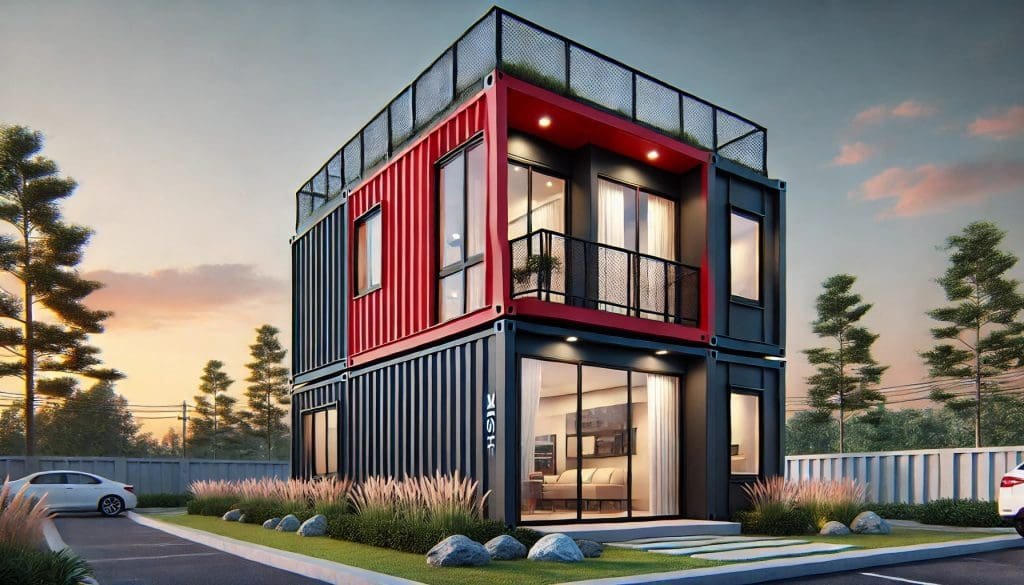
Importance of Proper Insulation in Container Extensions
A well-insulated shipping container home extension is essential for maintaining comfortable temperatures year-round. Without proper insulation, containers can be highly susceptible to temperature fluctuations, becoming too hot in the summer and too cold in the winter. Insulation not only helps regulate indoor temperatures but also reduces energy consumption by minimizing the need for heating and cooling. Many portable cabins come with built-in insulation, providing an energy-efficient, climate-controlled environment. For examples of well-insulated designs, explore climate-friendly portable cabins that offer thermal efficiency.
Types of Insulation Suitable for Container Extensions
Several types of insulation can be used in a container extension, each with its unique benefits. Spray foam insulation provides a high R-value and fills gaps effectively, making it a popular choice. Rigid foam panels offer a durable option with excellent thermal resistance, while fiberglass insulation is cost-effective and widely available. Each option suits different budgets and climates, providing flexibility for homeowners. Many container offices utilize these insulation types to ensure comfort and energy efficiency. For ideas on insulation types, see insulated container office designs built for energy savings.
Eco-Friendly Insulation Materials
For homeowners interested in sustainable options, eco-friendly insulation materials are available, such as recycled denim, sheep’s wool, and cellulose. These materials provide effective insulation while minimizing environmental impact. Natural insulators can also contribute to better air quality and reduce the carbon footprint of the project. Many sustainable container homes use eco-friendly insulation to align with green building practices. For more on green insulation options, explore environmentally-friendly container home models that prioritize sustainable materials.
Heating and Cooling Options for Year-Round Comfort
Climate control systems, such as mini-split HVAC units, portable heaters, and fans, can keep container extensions comfortable throughout the seasons. Mini-split systems are compact, energy-efficient, and can provide both heating and cooling. Additionally, smart thermostats allow for remote temperature adjustments, making it easy to control the environment even when you’re away. Many portable cabins include efficient heating and cooling systems for year-round comfort. For ideas on climate-controlled spaces, check out temperature-regulated portable cabin models designed for all seasons.
Ventilation Solutions for Air Quality and Comfort
Proper ventilation is crucial for maintaining good air quality and preventing moisture buildup in a container extension. Options like exhaust fans, operable windows, and ventilation systems help circulate fresh air and manage humidity levels. In humid climates, dehumidifiers can also improve comfort and prevent mold growth. Many container offices are equipped with ventilation solutions to ensure a healthy, breathable environment. For ideas on ventilated designs, see airflow-focused container office setups built with air quality in mind.
Investing in quality insulation, climate control, and ventilation solutions ensures that your shipping container extension remains comfortable and energy-efficient year-round. In the next section, we’ll discuss interior design ideas for container home extensions, exploring ways to make these spaces stylish, functional, and welcoming.
Interior Design Ideas for Container Home Extensions
Optimizing Space with Multi-Functional Furniture
In compact spaces like container home additions, maximizing functionality is essential. Multi-functional furniture, such as fold-out desks, Murphy beds, and modular storage units, can help create a comfortable, organized space without overcrowding. Using versatile pieces allows you to transform the area based on your needs, whether it’s a home office by day and guest room by night. Many portable cabins incorporate these types of adaptable furniture for efficient use of space. For inspiration, see multi-functional portable cabin designs that offer practical layout solutions.
Creating a Cohesive Look with Matching Finishes
A cohesive design between the container addition and the main house can make the extension feel like a natural part of the home. Matching finishes, such as paint colors, flooring materials, or cabinetry, create a unified aesthetic. Additionally, using similar textures or design elements throughout both spaces can enhance the visual flow. Many container offices showcase cohesive interiors that blend seamlessly with existing decor. For examples of stylishly coordinated interiors, explore harmonized container office models designed for continuity.
Enhancing Natural Light with Large Windows and Reflective Surfaces
Natural light can make a small container space feel larger and more inviting. Installing large windows or glass doors maximizes sunlight, creating an open and airy environment. Mirrors and reflective surfaces can further enhance this effect by distributing light throughout the space, giving it a bright, expansive feel. Many container homes integrate large windows to boost natural lighting. For ideas on light-optimized spaces, check out bright and open container home setups that bring the outdoors in.
Adding Warmth with Natural Materials and Accents
Incorporating natural materials, such as wood, stone, or textiles, adds warmth and texture to a container addition, making it feel cozy and welcoming. Wooden paneling, stone countertops, or woven rugs can soften the industrial look of the container while adding character to the space. Natural accents are also commonly found in portable cabins, which often prioritize comfort within compact spaces. For decor inspiration, explore cozy portable cabin designs that balance modern aesthetics with warmth.
Using Minimalist Design Principles to Avoid Clutter
A minimalist approach to interior design helps maintain an organized, uncluttered look in compact spaces. Selecting a few key furniture pieces and avoiding excessive decor creates a clean, modern environment. This approach is practical for container additions, where space is limited, and simplicity can enhance functionality. Many container offices employ minimalist design principles to create efficient work environments. For examples of minimalistic layouts, see streamlined container office interiors that prioritize simplicity.
By incorporating multi-functional furniture, maximizing natural light, and choosing cohesive finishes, you can create a stylish and functional interior for your shipping container extension. In the next and final section, we’ll cover finding vendors and builders for container home extensions, providing tips on selecting reputable providers to ensure a successful project.
Finding Vendors and Builders for Container Home Extensions
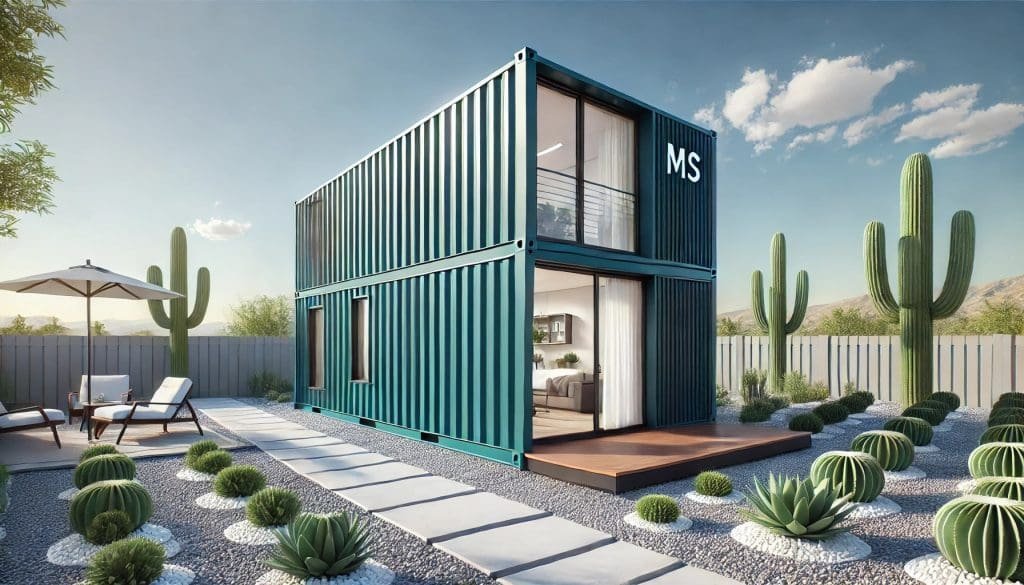
Choosing a Reliable Vendor for Quality and Durability
When adding a shipping container home extension, selecting a reputable vendor ensures a high-quality, durable structure that meets safety standards. Look for vendors with experience in container conversions and positive customer reviews. A reliable provider will offer clear information about materials, building practices, and maintenance needs, giving you peace of mind. Companies like Saman Portable specialize in modular container solutions and have a proven reputation in the industry for quality and customer satisfaction.
Exploring Customization Options and Upgrades
Different vendors offer various levels of customization, from basic container shells to fully outfitted units with eco-friendly upgrades, smart technology, and high-end finishes. When comparing options, discuss interior finishes, insulation, energy-efficient systems, and other features that align with your vision. Many portable cabin providers offer customizable designs to suit a wide range of uses and preferences. For flexible customization options, explore adaptable portable cabin solutions that cater to individual needs.
Evaluating Quality and Materials Used
Quality construction and durable materials are essential for a long-lasting container extension. Confirm that the vendor uses rust-resistant steel, durable weatherproof coatings, and quality insulation. These features ensure the container withstands environmental factors and requires minimal maintenance. Many container offices are built with durable materials to support extended use, providing examples of high-quality builds. For durable container setups, see weather-resistant container office designs that focus on longevity.
Understanding Warranty, Support, and Maintenance Services
A comprehensive warranty offers protection against manufacturing defects, ensuring peace of mind. Ask about the warranty terms covering the container structure, interior fixtures, and installed systems like HVAC or solar panels. Additionally, verify if the vendor offers support for maintenance or repairs. Many container homes come with warranty-backed options that uphold quality standards over time. For warranty-protected options, explore warrantied container home models that provide reliable after-purchase support.
Considering Delivery and Installation Services
Delivery and installation are key factors when purchasing a container extension, especially if your property has access limitations. Some vendors include delivery as part of the package or partner with local contractors for on-site setup. Discussing logistics with your vendor ahead of time ensures that the installation process is smooth and efficient. Many portable cabins are designed for easy installation and come with convenient delivery options. For delivery-ready models, see transport-friendly portable cabin designs that simplify the installation process.
Selecting a reliable vendor, exploring customization options, and understanding warranty and delivery services will ensure a smooth and successful container home extension project. This concludes our guide on shipping container home extensions, providing you with everything you need to create a functional and stylish addition to your home.
Frequently Asked Questions
1. What are the benefits of adding a shipping container extension to my home?
Shipping container extensions offer several benefits, including affordability, quick construction, durability, and eco-friendliness. They provide a flexible, modular solution that can be customized to serve various purposes, such as additional bedrooms, home offices, or guest suites. Shipping containers are also durable, low-maintenance, and can be outfitted with eco-friendly features, making them an efficient and sustainable choice.
2. How much does a shipping container home extension cost?
The cost of a shipping container home extension depends on factors like container condition, customization, insulation, foundation, and installation. A basic single-container extension can start around $10,000, but costs can increase with added features like solar panels, eco-friendly fixtures, and custom interior finishes. Professional installation adds to the budget, but DIY setups may reduce costs if you have the skills and resources.
3. Do I need a permit to add a shipping container to my house?
Yes, most areas require permits for shipping container extensions, as they are considered structural additions. Local zoning laws, building codes, and setback requirements may apply. Consulting with local authorities or a professional familiar with container builds ensures you meet all regulations and secure the necessary permits for your extension.
4. How can I insulate a shipping container extension for year-round comfort?
Insulating a container extension helps regulate indoor temperatures and provides year-round comfort. Popular insulation types include spray foam, rigid foam panels, and eco-friendly options like recycled denim or wool. Adding insulated walls, floors, and ceilings, along with double-glazed windows, enhances energy efficiency and maintains a comfortable indoor climate.
5. What customizations are available for shipping container home extensions?
Shipping container extensions offer a wide range of customizations, from interior finishes and insulation to eco-friendly features like solar panels and rainwater collection systems. Common upgrades include large windows for natural light, custom flooring, cabinetry, and smart home integrations. Many vendors provide customization packages to help tailor the extension to your specific needs and aesthetic preferences.
 Container Cafe
Container Cafe
















































































